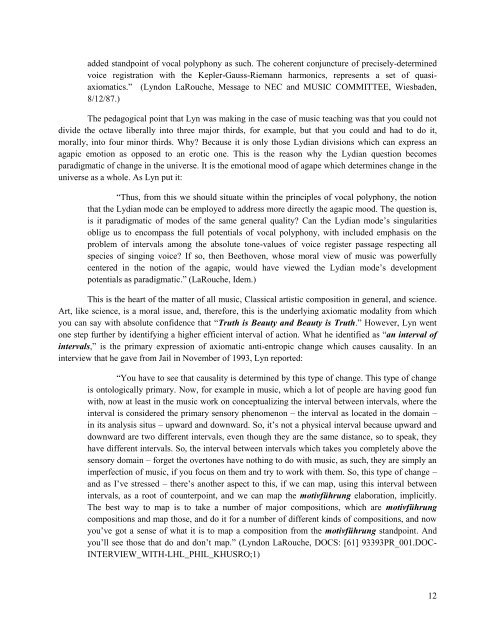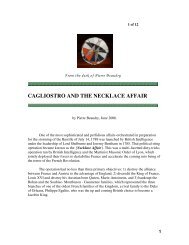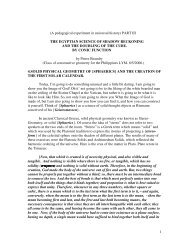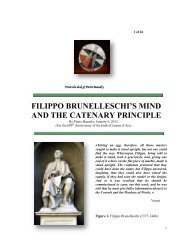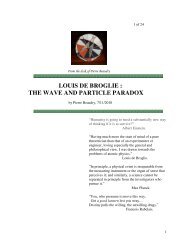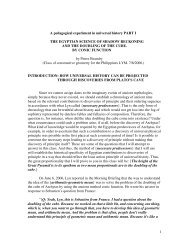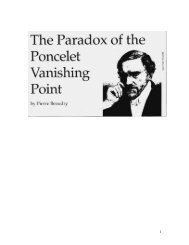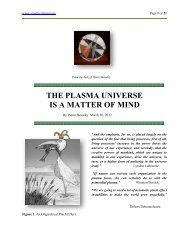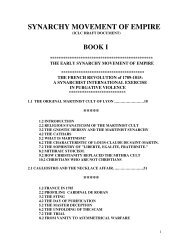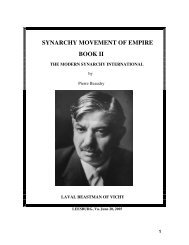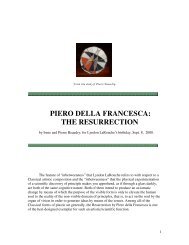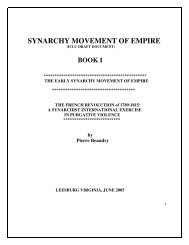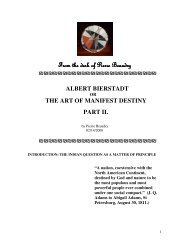BEETHOVEN SONATA OPUS 27, NO. 2.pdf - Pierre Beaudry's ...
BEETHOVEN SONATA OPUS 27, NO. 2.pdf - Pierre Beaudry's ...
BEETHOVEN SONATA OPUS 27, NO. 2.pdf - Pierre Beaudry's ...
Create successful ePaper yourself
Turn your PDF publications into a flip-book with our unique Google optimized e-Paper software.
added standpoint of vocal polyphony as such. The coherent conjuncture of precisely-determined<br />
voice registration with the Kepler-Gauss-Riemann harmonics, represents a set of quasiaxiomatics.”<br />
(Lyndon LaRouche, Message to NEC and MUSIC COMMITTEE, Wiesbaden,<br />
8/12/87.)<br />
The pedagogical point that Lyn was making in the case of music teaching was that you could not<br />
divide the octave liberally into three major thirds, for example, but that you could and had to do it,<br />
morally, into four minor thirds. Why? Because it is only those Lydian divisions which can express an<br />
agapic emotion as opposed to an erotic one. This is the reason why the Lydian question becomes<br />
paradigmatic of change in the universe. It is the emotional mood of agape which determines change in the<br />
universe as a whole. As Lyn put it:<br />
“Thus, from this we should situate within the principles of vocal polyphony, the notion<br />
that the Lydian mode can be employed to address more directly the agapic mood. The question is,<br />
is it paradigmatic of modes of the same general quality? Can the Lydian mode’s singularities<br />
oblige us to encompass the full potentials of vocal polyphony, with included emphasis on the<br />
problem of intervals among the absolute tone-values of voice register passage respecting all<br />
species of singing voice? If so, then Beethoven, whose moral view of music was powerfully<br />
centered in the notion of the agapic, would have viewed the Lydian mode’s development<br />
potentials as paradigmatic.” (LaRouche, Idem.)<br />
This is the heart of the matter of all music, Classical artistic composition in general, and science.<br />
Art, like science, is a moral issue, and, therefore, this is the underlying axiomatic modality from which<br />
you can say with absolute confidence that “Truth is Beauty and Beauty is Truth.” However, Lyn went<br />
one step further by identifying a higher efficient interval of action. What he identified as “an interval of<br />
intervals,” is the primary expression of axiomatic anti-entropic change which causes causality. In an<br />
interview that he gave from Jail in November of 1993, Lyn reported:<br />
“You have to see that causality is determined by this type of change. This type of change<br />
is ontologically primary. Now, for example in music, which a lot of people are having good fun<br />
with, now at least in the music work on conceptualizing the interval between intervals, where the<br />
interval is considered the primary sensory phenomenon – the interval as located in the domain –<br />
in its analysis situs – upward and downward. So, it’s not a physical interval because upward and<br />
downward are two different intervals, even though they are the same distance, so to speak, they<br />
have different intervals. So, the interval between intervals which takes you completely above the<br />
sensory domain – forget the overtones have nothing to do with music, as such, they are simply an<br />
imperfection of music, if you focus on them and try to work with them. So, this type of change –<br />
and as I’ve stressed – there’s another aspect to this, if we can map, using this interval between<br />
intervals, as a root of counterpoint, and we can map the motivführung elaboration, implicitly.<br />
The best way to map is to take a number of major compositions, which are motivführung<br />
compositions and map those, and do it for a number of different kinds of compositions, and now<br />
you’ve got a sense of what it is to map a composition from the motivführung standpoint. And<br />
you’ll see those that do and don’t map.” (Lyndon LaRouche, DOCS: [61] 93393PR_001.DOC-<br />
INTERVIEW_WITH-LHL_PHIL_KHUSRO;1)<br />
12


